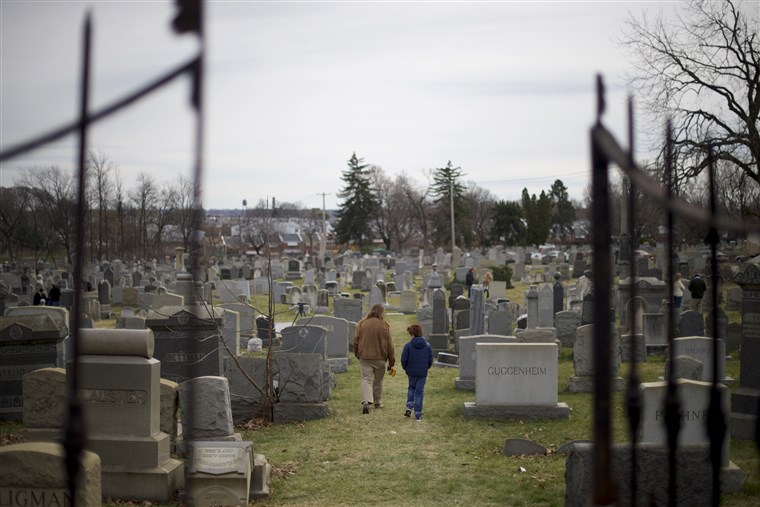U.S. Life Expectancy Rates Continues to Drop; Drug Use, Suicide Leading Factors
A worrisome downward trend has been highlighted due to three new reports recently published by the Centers for Disease Control. These numbers display the third consecutive year of America’s steep decline involving the average life expectancy, with the painstakingly obvious contributions of the country’s ongoing drug crisis and climbing suicide rates.
In terms of America’s previous history in life expectancy, this three-year drop represents the longest sustained decline since the period of 1915 to 1918. During these years the elements of decrease were drawn from World War I and the 1918 influenza pandemic, which proved to be extremely devastating.
Currently, the causes are drug overdoses, which claimed over 70,000 lives in 2017, and suicides, which numbered almost 50,000 in that same time period. And these numbers were an increase from the previous year. “The continuation of this trend is a warning for all of us that our country has not found a way of addressing the profound needs of people who are dying,” said Eric Caine, professor of psychiatry and director of the Injury Control Research Center for Suicide Prevention at the University of Rochester Medical Center.
The U.S. has lost three-tenths of a year in life expectancy since 2014, a stunning reversal for a developed nation, which lies far behind other wealthy nations. For example, Japan’s life expectancy is 84.1 years and Switzerland’s is 83.7 years, ranking first and second by the Organization for Economic Cooperation and Development. At 77.9 years, the U.S. ranks 29.
The increases of both the overuse of drugs and the rates of suicide partly reflect the nation’s growing and aging population. In juxtaposition to this statement, it happens to be the deaths in the younger age groups, those involving the middle-aged as well, that have had the largest impact on the life expectancy. The decline has to do with people in their 20s and 30s dying, not the latter which involves the older population.
It is troubling to realize that deaths from overdoses and suicides are likely linked. Both may be caused by social shifts in the country that have caused people to become less connected to each other in communities. “There has been an assumption at times that overdoses fit into one of two categories: they’re intentional or they’re unintentional,” says Kathryn McHugh of Harvard Medical School. McHugh notes that many people have suicidal thoughts prior to an overdose or that others may take their own lives just to escape addiction. “There is a tremendous amount of overlap between the two that isn’t talked about nearly enough.”
The increases in racial discrimination and gun violence also contribute to the rates of suicide in the U.S., as well as the seemingly widening income gap that leaves many without a comfortable existence. The perception of gun violence does highlight the fact that firearms are a key driver to suicidal reactions. In fact, suicides involving a firearm are responsible for approximately 22,000 deaths each year in the U.S., including the deaths of 950 children. A crucial point is made by psychiatrist and behavioral scientist Keith Humphreys of Stanford University, who says, “Having easily available lethal means is a big risk factor for suicide.”
It has been reported that in terms of suicide, there is a significant difference between urban and rural Americans. Urban residents have a 11.1 percent per 100,000 rate of suicide as opposed to rural resident’s 20 percent per 100,000. There is a distinct difference as 60 percent of rural homes have a gun in possession, where less than half of the homes in urban areas own a firearm.
Regarding the deaths by drug overdose, the numbers spiked between 2015 and 2017. The age groups most affected by this were adults between the ages of 25 and 54. The main culprit of this increase was fentanyl and other synthetic opioids. According to the National Institute on Drug Abuse, these synthetic opioids are killing more people than heroin, cocaine, methamphetamine, and methadone. Overall, there were 47,600 deaths from opioids, 28,500 were from mainly fentanyl. This led a distinct increase from last year, with nearly 45 percent more deaths.
CDC director Robert Redfield said in a statement, “We are losing too many Americans, too early and too often, to conditions that are preventable.” Although the U.S. began spending $1 billion in 2017 to fight the opioid crisis; however, the expenditure would have been more effective if it came
as early as 2015 when substance abuse became more common. At the very least, now that President Trump has declared the situation a national emergency, the problem may finally be addressed properly, and alternate solutions can be found.
It’s important to realize that events such as the few described do not just “happen.” Rather, they emerge from social, political, and economic context of daily life. The U.S. publicizes its wealth, but in order for this wealth to matter, the prosperity must reach the citizens. It’s unacceptable to have a nation where, due to over-prescribing opioids and ignoring the growing suicide rates, the U.S.’s life expectancy rate continues to decline.









